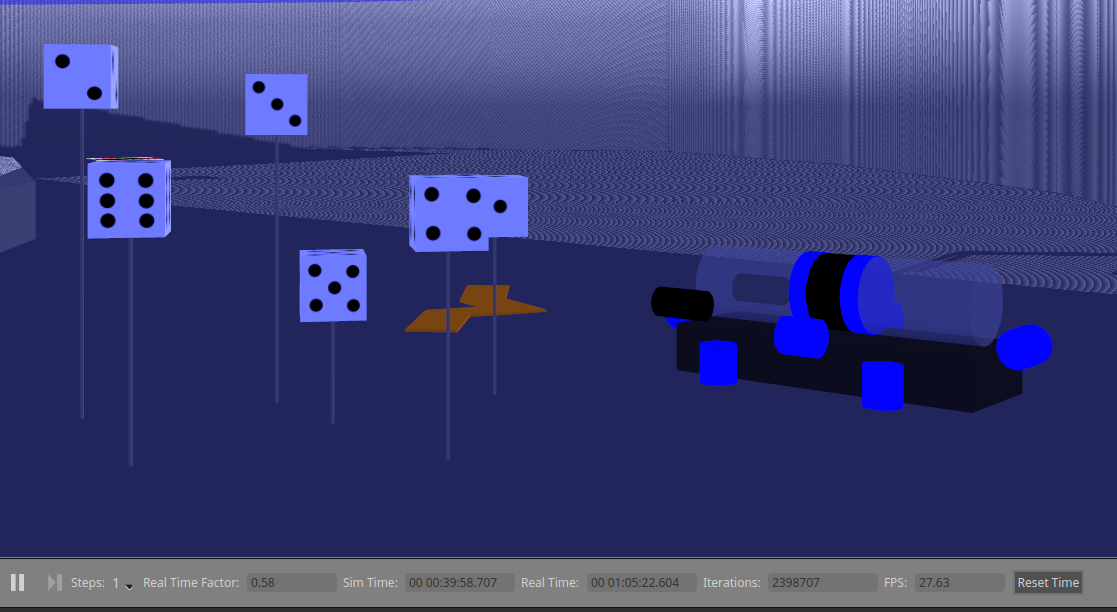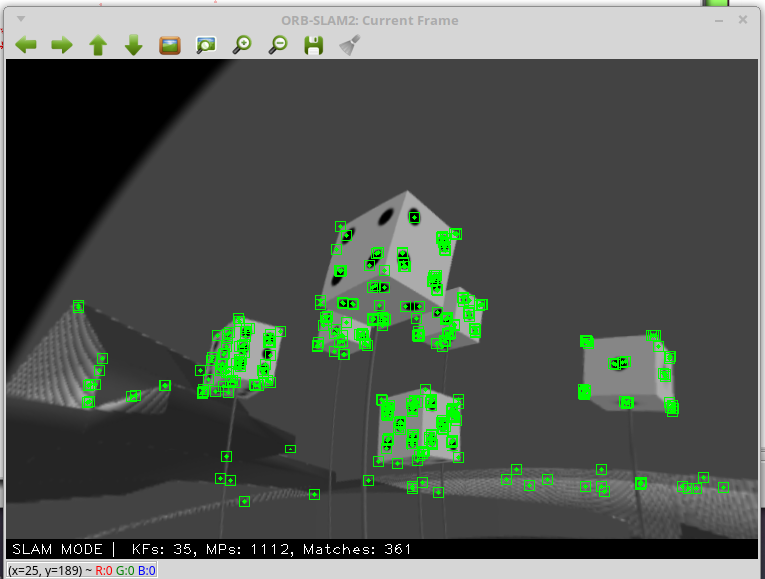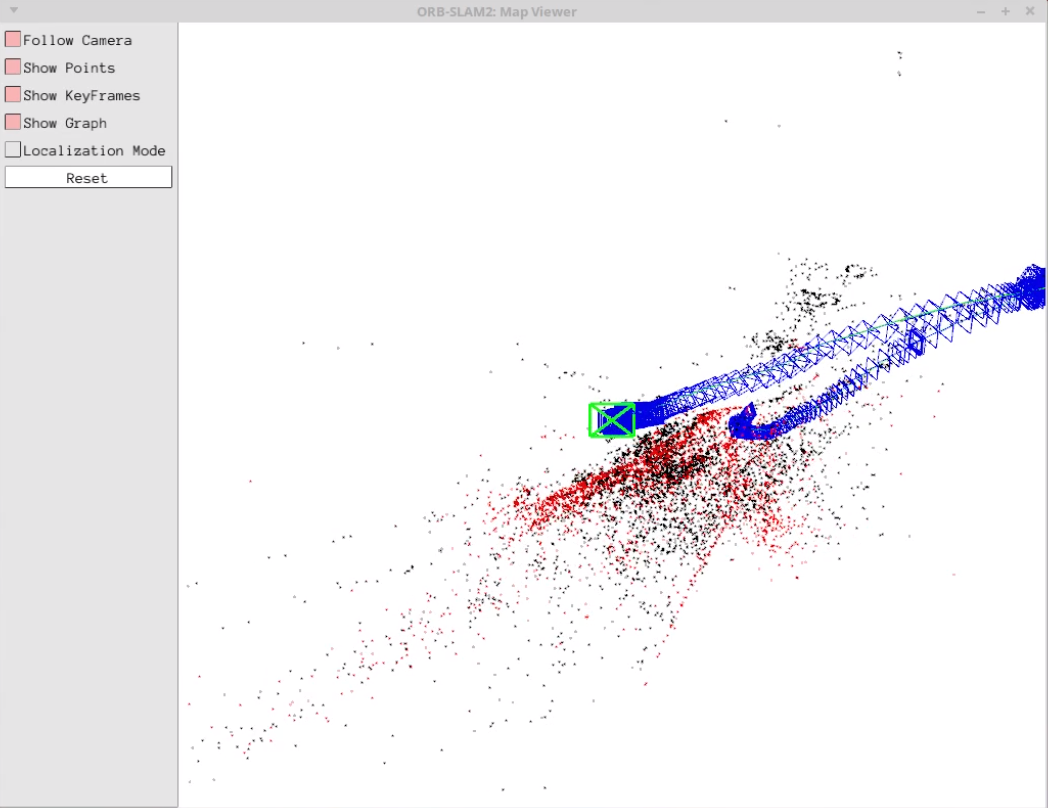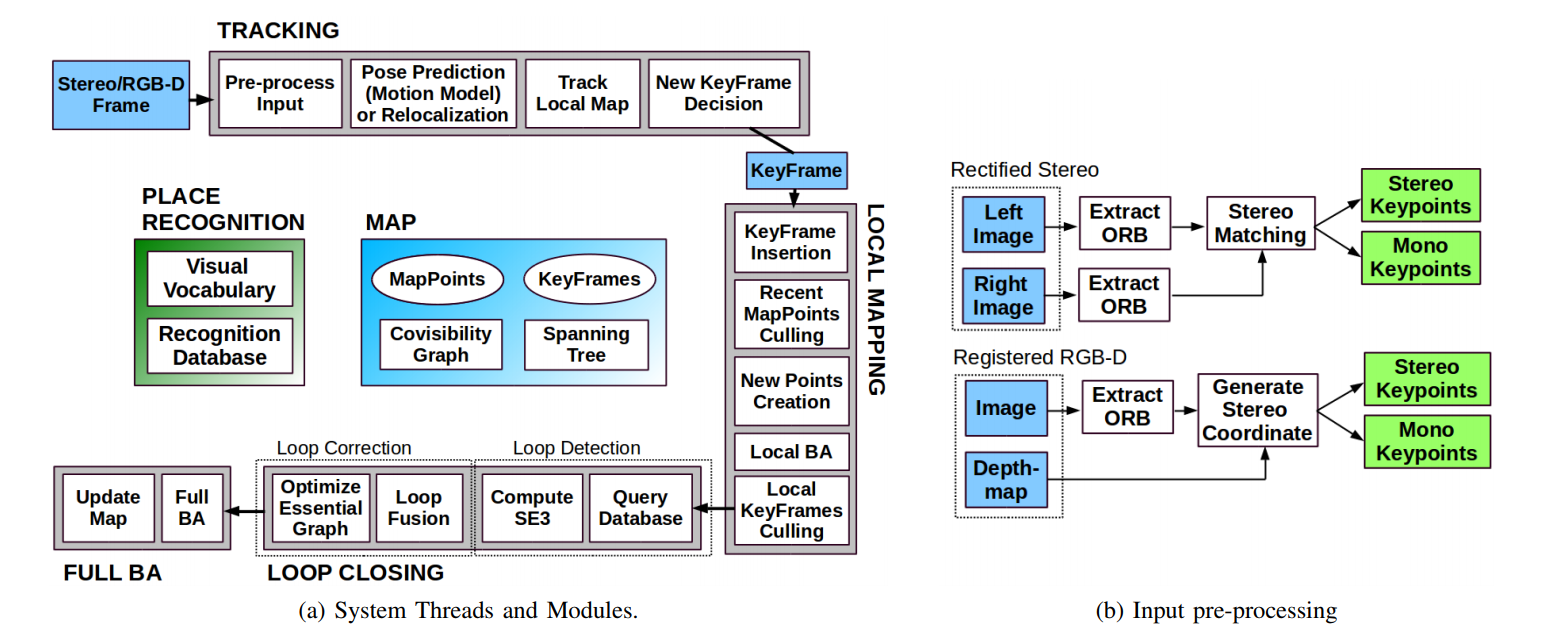User Tools
Table of Contents
SLAM
Simultaneous Localization and Mapping
Overview
In robot navigation, a SLAM algorithm is used to construct a map of the robot's environment, while simultaneously locating the robot within that map. There are many different SLAM algorithms, but we are currently using a visual based system using the sub's right and left cameras. This allows us to link the system to Object Detection.
The specific system we are using is ORB-SLAM2, an open source feature based visual slam system which we modified for the sub. The paper describing the system can be found here.
The algorithm works by detecting features (such as edges and corners) in an image, and locates them in space using triangulation with other known map points.
 The sub in simulated environment.
The sub in simulated environment.
The view of a single keyframe with detected map points.
Structure
The SLAM algorithm is complex, but it links to the rest of the sub's system through a single node at ~/ros/src/robosub_orb_slam/src/ros_stereo.cc. The node:
Subscribes to:
- /camera/left/image_raw - collects image data from left robosub camera.
- /camera/right/image_raw - collects image data from right robosub camera.
Publishes to:
- /SLAMpoints - the 3d location of the map points in space, and the 2d location of the map points on each image frame.
How to Run
$ roslaunch robosub_orb_slam slam.launch use_viewer:=True
How it Works
ORB-SLAM2 is a feature based algorithm that takes keyframes from video output and extracts keypoints or features (such as corners), and uses them to establish location of the sub and its surroundings.
It consists of three main modules: Tracking, Local Mapping, and Loop Closing.
Tracking
-Tracking localizes the camera by comparing features in a local map.
-Detects features using the FAST Algorithm.
-Describes features using ORB Algorithm.
-Selects a new keyframe.
-If localization is lost, uses Place Recognition module to relocate.
Local Mapping
-Keyframes are added to co-visibility graph Spanning Tree.
-New Map points are creates by triangulating matching ORB features from different keyframes.
-Validity of map point is checked by seeing if it is found in other keyframes where it is predicted to be. Must be seen by at least 3 other keyframes.
Loop Closing
-Loop closing is when the sub recognizes that it has returned to a previous location and adjust map points to accommodate.
-To detect possible loops, check bag of words vectors in Place Recognition module of the current keyframe and its neighbors in the co-visibility graph.
-If loop candidate is found preform similarity transform.
-Fuse map points and preform bundle adjustment.
Map
Each map point stores:
- Its 3D position in the world coordinate system.
- ORB descriptor.
- The maximum dmax and minimum dmin distances at which the point can be observed, according to the scale invariance limits of the ORB features.


